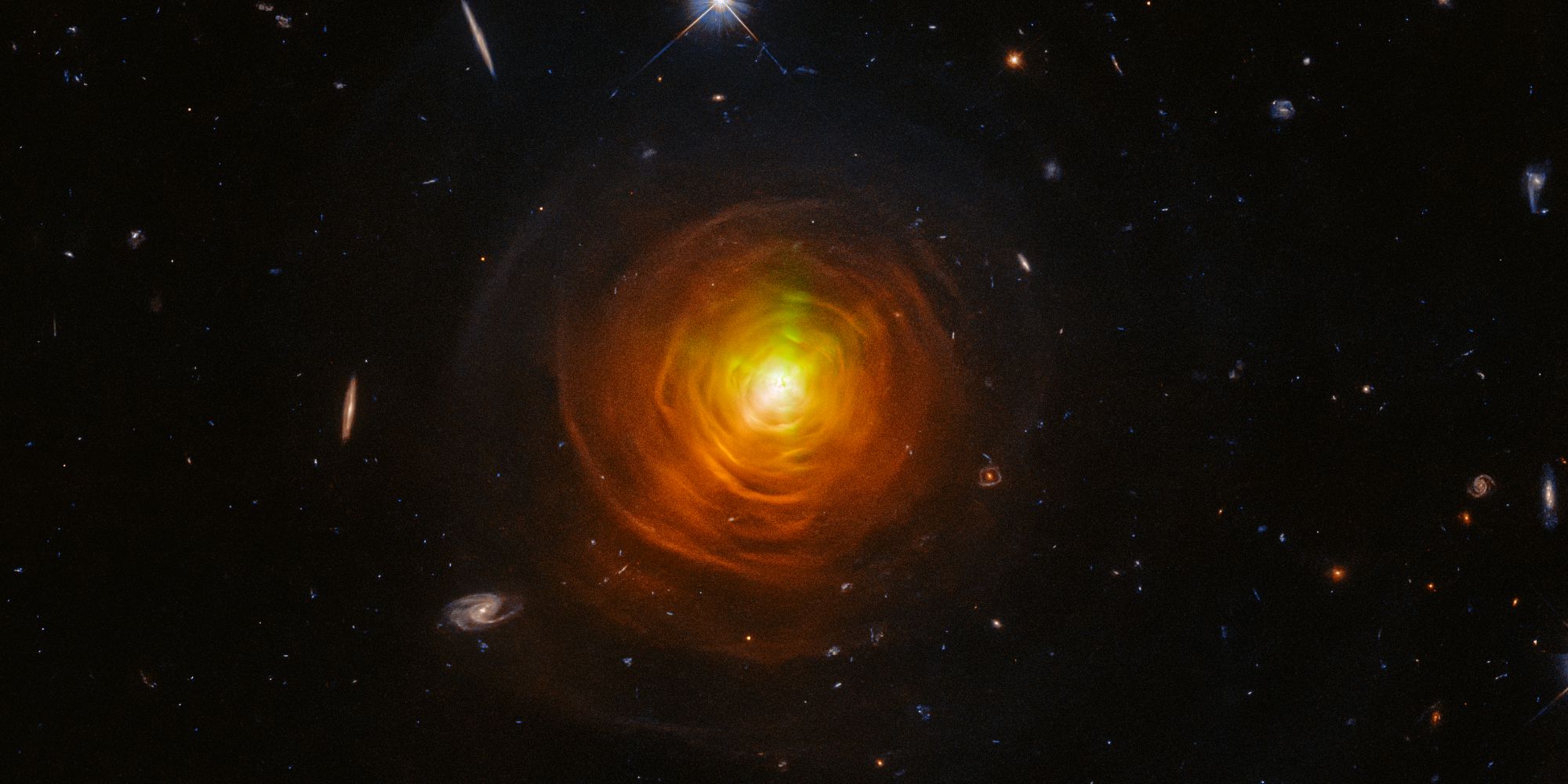NASA's Hubble Telescope has captured some of the most beautiful photos of space, and this latest one sets the perfect creepy mood right before Halloween. As countless discoveries have proven over the years, outer space is filled with seemingly endless things to uncover. Whether it be daunting black holes, supernovas, or potential Earth-like planets, there's always something new for astronomers to come across.
One tool that's proven invaluable for this work is the Hubble Space Telescope. Launched in 1990 and costing around $1.5 billion to complete, Hubble has been at the heart of some truly noteworthy accomplishments. It helped scientists determine the universe's age, found new moons orbiting Pluto, and provided invaluable insight into how the universe is expanding. On top of all those things and more, Hubble has also been responsible for capturing some of the most famous space photographs — and it's still taking them to this very day.
NASA just shared one of Hubble's latest snapshots, and it's a genuinely spooky one that's perfect for Halloween. What you see above is a dying star — specifically, a red giant star. Known as CW Leonis, the star is a truly incredible sight. It has a bright flash of light at its center and eerie rings surrounding it. The spiral shape also resembles a number of things, including a portal to another dimension, a cosmic witch cauldron, or even a spider web from a nightmarish space spider. Thankfully, none of those things are true! Instead, there are logical explanations for how CW Leonis got its haunting appearance.
How This Dying Star Got Its Shape
Located 400 light-years from Earth, CW Leonis is the closest carbon star to our planet. The relatively short distance makes it easy for astronomers to study the intricate details of CW Leonis, especially compared to other stars much further away. One such detail is the dusty clouds around the outside of CW Leonis. These are large amounts of carbon being ejected out from the star. CW Leonis' nuclear fusion creates carbon, the carbon grows in the star's interior, and it's eventually shot out into space — creating the cloudy look seen above.
There are also the light beams emitting from CW Leonis. NASA says their brightness has changed a lot over the last 15 years, which is "an incredibly short time span in astronomical terms." The reason for this change in brightness isn't 100 percent known, but astronomers have an idea. "Astronomers speculate that gaps in the dust shrouding CW Leonis may allow beams of starlight to pierce through and illuminate dust, like searchlight beacons through a cloudy sky."
And, of course, there's CW Leonis' striking color. The reason for its orange/red hue is the 'low' 2,300°F surface temperature. That might sound incredibly hot compared to the temperature on Earth, but it's a far cry from the Sun's 27,000,000°F temps. CW Leonis also has some beams that shine at invisible wavelengths, so ones that appear in green have been edited by NASA for "better analysis." Add all of those things together, and CW Leonis is the perfect spooky star to ring in the Halloween season with.
Source: NASA


